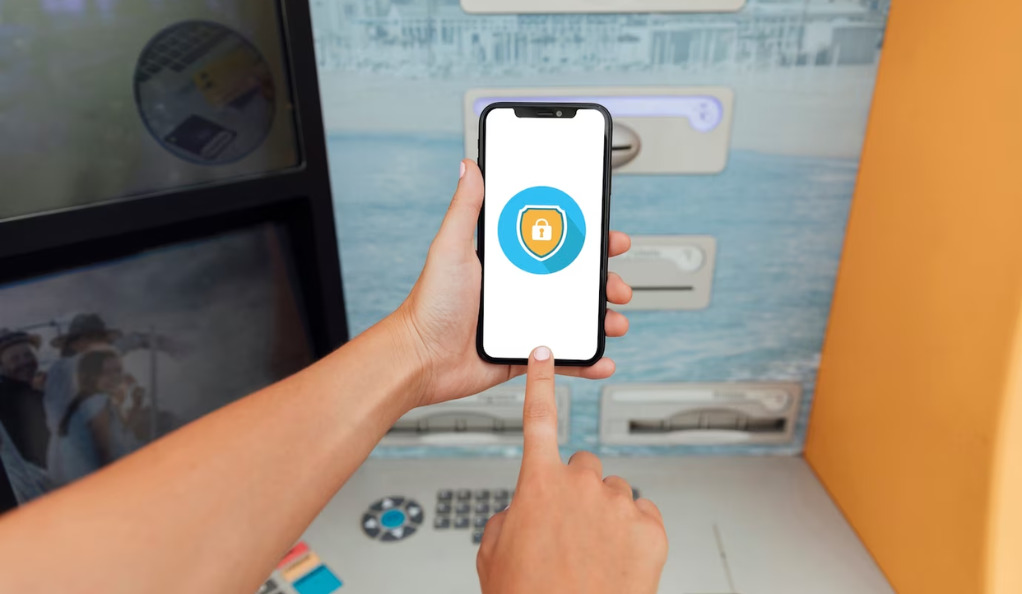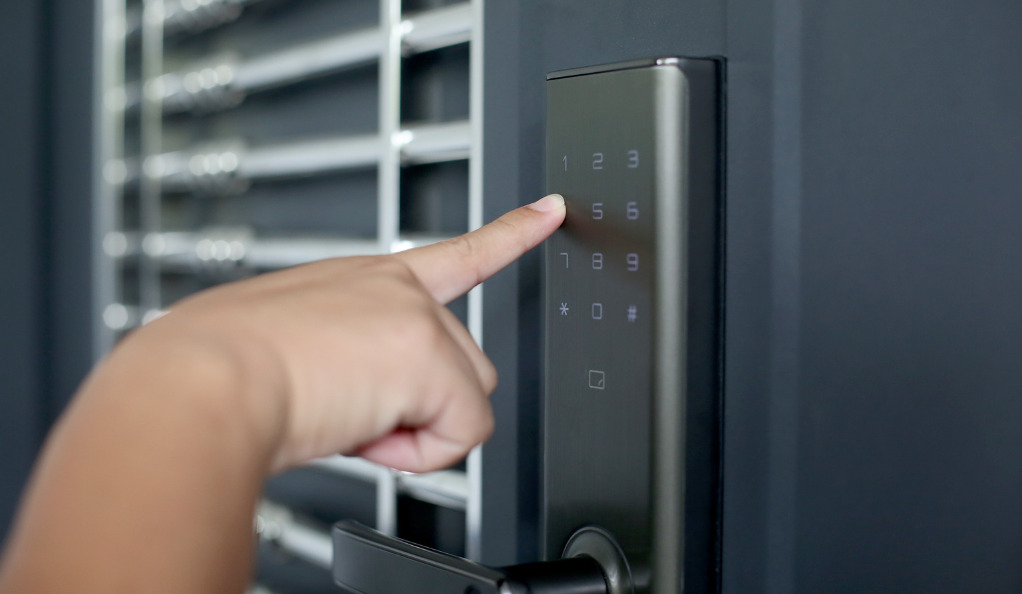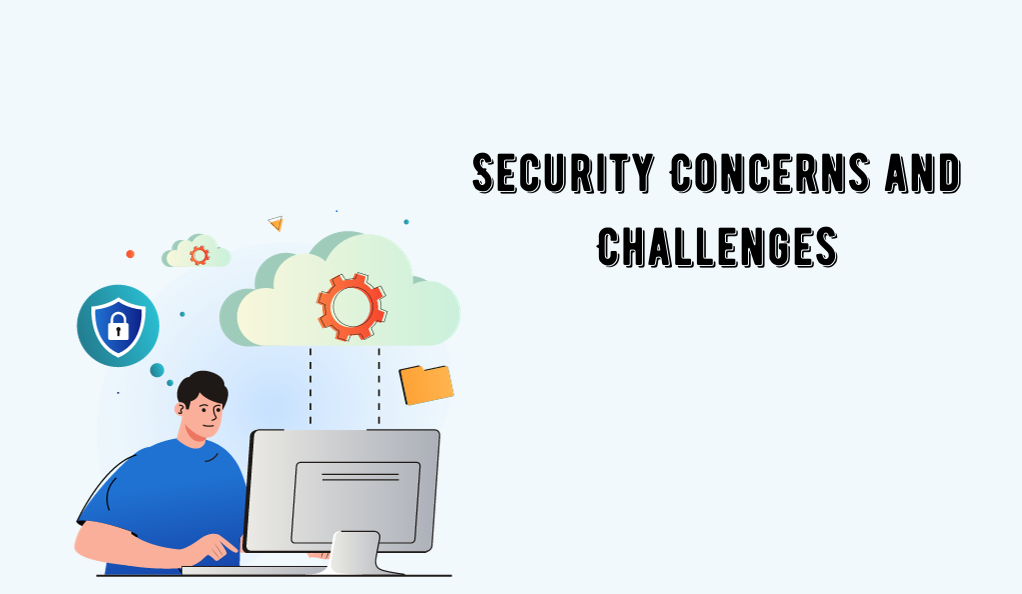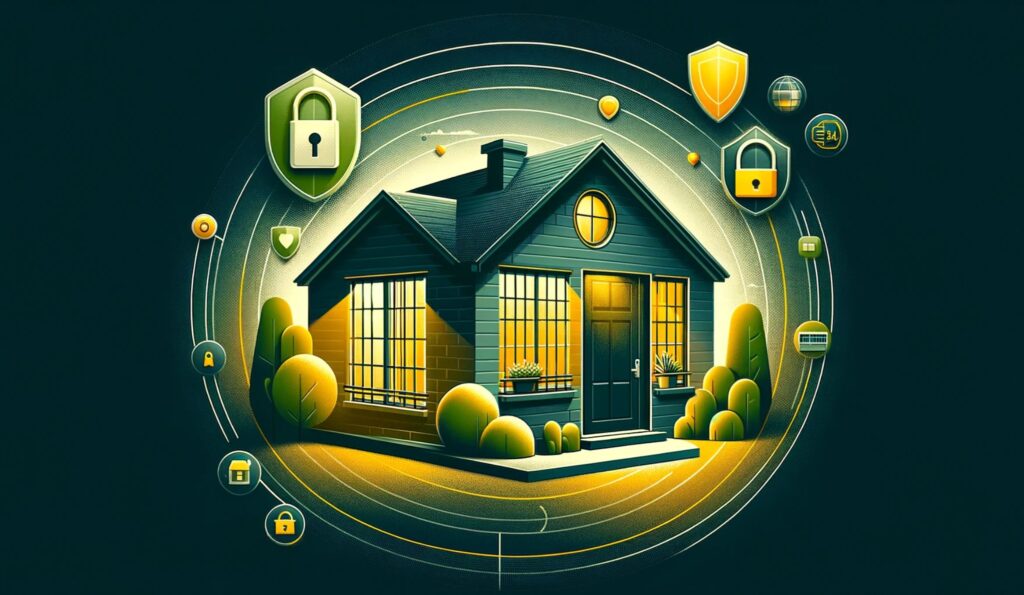In the age of digital transformation, the way we secure our homes and offices is undergoing a significant shift. Gone are the days when a physical key was the only means to access a space. Enter the era of smart locks, a revolutionary approach to security that combines the power of technology with the traditional concept of locks.
What is a Smart Lock?
A smart lock is an electromechanical device designed to lock and unlock doors upon receiving a specific prompt. Unlike traditional locks that require a physical key, smart locks operate using electronic keypads, biometric sensors, access cards, or even wireless commands from registered mobile devices. The term “smart” signifies the lock’s ability to communicate with other devices, often via Bluetooth, Wi-Fi, or other wireless protocols.
| Feature | Traditional Locks | Smart Locks |
|---|---|---|
| Operation | Manual with physical key | Electronic, biometric, or wireless |
| Connectivity | None | Bluetooth, Wi-Fi, etc. |
| Key Management | Physical key duplication | Virtual key sharing via apps |
| Access Monitoring | Not available | Real-time alerts & access logs |
| Integration | Standalone | Can integrate with other smart devices |
Evolution from Traditional to Smart
The journey from traditional locks to smart locks is a testament to how technology can enhance everyday life. Traditional locks have served their purpose for centuries, providing a basic level of security. However, as our lives became more interconnected, the need for a more sophisticated, flexible, and integrated security system arose.
Smart locks address these modern-day challenges. They offer not just the convenience of keyless entry but also enhanced security features. For instance, if you’re away on vacation and need to let a neighbor into your home, you can grant them temporary access via a virtual key. Or, if you’re running a business, you can monitor who accesses certain areas and at what times, ensuring heightened security and accountability.
Why the Shift to Smart?
The transition to smart locks is driven by several factors:
- Convenience: No more fumbling for keys or worrying about losing them. With smart locks, your smartphone or a biometric feature like a fingerprint can grant you access.
- Enhanced Security: Smart locks often come with features like auto-locking after a certain period, alerts for unauthorized access attempts, and the ability to change access codes remotely.
- Integration with Smart Homes: As homes become smarter, integrating security with other smart devices like cameras, lights, and alarms offers a more cohesive and efficient system.
The Mechanics of Smart Locks

Delving deeper into the world of smart locks, it’s essential to understand the mechanics that power these advanced devices. While they might seem complex at first glance, the underlying principles are rooted in combining traditional lock mechanisms with modern technology.
Electromechanical Components
At the heart of every smart lock lies an electromechanical system. This system is responsible for the actual locking and unlocking of the door. When a valid command is received, the electromechanical components activate, either retracting or extending the lock bolt. This is similar to turning a key in a traditional lock, but it’s done electronically.
Keyless Entry Options
One of the standout features of smart locks is the variety of keyless entry options they offer:
- Electronic Keypads: These are numeric or alphanumeric pads where users enter a pre-set code to gain access. Some advanced versions even offer touchscreens or scramble features to prevent potential intruders from guessing codes based on wear patterns.
- Biometric Sensors: Biometrics refers to unique human characteristics. In the context of smart locks, this usually means fingerprint sensors, but it can also include facial recognition or even retina scans in more advanced systems.
- Access Cards: Similar to hotel room cards, these are physical cards that, when swiped or tapped against a reader, send a signal to unlock the door.
- Wireless Commands: Using Bluetooth, Wi-Fi, or other wireless protocols, smart locks can receive commands from registered mobile devices. This can be as simple as pressing a button on an app or even setting up geofencing, where the door unlocks automatically when you’re within a certain range.
| Entry Method | Features | Security Level |
|---|---|---|
| Electronic Keypad | Touchscreen, scramble feature | Moderate |
| Biometric Sensors | Fingerprint, facial recognition | High |
| Access Cards | Swipe or tap to unlock | Moderate |
| Wireless Commands | App-based, geofencing | Variable |
Connectivity and Integration
The “smart” in smart locks comes from their ability to connect and communicate with other devices. This is achieved through:
- Bluetooth: Allows for short-range communication, typically used for unlocking doors as you approach them with a paired device.
- Wi-Fi: Offers the ability to control and monitor your smart lock from anywhere with an internet connection. This is particularly useful for remote management or checking access logs.
- Integration with Other Devices: Many smart locks can be integrated into broader smart home or office ecosystems. This means they can work in tandem with security cameras, smart doorbells, lighting systems, and even voice assistants like Amazon’s Alexa or Google Assistant.
Benefits of Smart Locks
The rise in popularity of smart locks isn’t just due to their technological prowess; it’s also because of the tangible benefits they bring to users. From enhanced security measures to unparalleled convenience, smart locks are redefining what it means to secure our spaces.
Enhanced Security Against Intruders
Traditional locks, while effective, have vulnerabilities. They can be picked, keys can be duplicated, and if a key is lost, there’s always a risk until the lock is changed. Smart locks address many of these concerns:
- No Physical Key: Without a physical key to duplicate or steal, many traditional methods of breaking in are rendered useless.
- Auto-locking: Many smart locks offer an auto-lock feature, ensuring that even if you forget to lock the door, it will secure itself after a set period.
- Alerts: Real-time notifications for any unauthorized access attempts or if the door is left unlocked can be invaluable for security.
Easier Access for Users
Gone are the days of fumbling for keys in the dark or panicking over a lost house key:
- Remote Access: Lock or unlock your door from anywhere in the world using a smartphone app.
- Temporary Access Codes: Grant temporary access to guests, cleaners, or contractors without having to hand over a physical key. Once their job is done, the access code can be revoked.
- Multiple Users: Different members of a household or office can have their own access codes or biometric registrations, allowing for personalized access.
Monitoring Access and Real-time Alerts
With smart locks, you’re always in the loop:
- Access Logs: View who entered or exited and at what time. This is especially useful for businesses to track employee movements or for homeowners to monitor service personnel.
- Instant Notifications: Be instantly notified on your mobile device for various events, such as when the door is unlocked, if an incorrect code is entered multiple times, or if the battery is running low.
Integration with Other Smart Devices
Smart locks don’t work in isolation; they can be a part of a larger smart ecosystem:
- Smart Doorbells and Cameras: Some smart locks can integrate with doorbell cameras, allowing you to see who’s at the door and grant them access, all from the same app.
- Home Automation Scenes: Imagine coming home, and as your door unlocks, the lights turn on, your favorite music starts playing, and the thermostat adjusts to your preferred temperature. This level of integration is possible with smart locks and home automation platforms.
Cost Savings
While the initial investment might be higher than traditional locks:
- No Need for Key Duplication: The costs and time associated with duplicating keys, especially for large establishments, can add up. Smart locks eliminate this need.
- Reduced Risk of Lockouts: Getting locked out and needing a locksmith can be expensive. With smart locks, as long as you have your phone or access to a registered device, you can always get in.
Smart Locks in Action

Understanding the theory behind smart locks is one thing, but seeing them in action truly showcases their potential. From homes to businesses, these devices are revolutionizing the way we think about access and security.
Granting Access via Virtual Keys
One of the standout features of smart locks is the ability to grant access without the need for physical presence:
- Scheduled Access: If you have a cleaner or gardener who comes at specific times, you can set a schedule for their access. They get a virtual key that works only during those times, ensuring security outside of those hours.
- One-time Access: For deliveries or one-off visits, you can provide a one-time access code that expires after use. This ensures that the person can only enter once, and you don’t have to worry about revoking access later.
- Remote Approval: If someone unexpected shows up, they can request access, and you can approve or deny it in real-time, no matter where you are.
Integration with Other Devices
Smart locks truly shine when integrated with other smart devices:
- Doorbell Cameras: When someone rings the doorbell, you can see who it is through the camera, communicate with them, and if needed, unlock the door, all from the same interface.
- Security Systems: Smart locks can be integrated into broader security systems. If someone tries to tamper with the lock, the security system can trigger alarms, lights, or even notify the police.
- Voice Assistants: Integration with voice assistants like Alexa, Google Assistant, or Siri allows for hands-free control. You can command your assistant to lock or unlock the door, check the lock’s status, or even set routines that include the lock.
Biometric Features
Biometrics in smart locks offer an added layer of security:
- Fingerprint Sensors: Instead of remembering codes, simply place your finger on the sensor. The lock identifies your unique fingerprint and grants access.
- Facial Recognition: Some advanced locks come with cameras that can recognize registered faces. This ensures that even if someone knows your access code, they can’t get in without the approved face.
- Retina Scans: While less common in residential settings, retina scans offer one of the highest security levels, making them popular in high-security areas like data centers or research labs.
Advanced Security Protocols
Smart locks employ advanced security measures to ensure data safety:
- End-to-End Encryption: Communication between the lock, the app, and any integrated devices is encrypted, ensuring hackers can’t intercept and misuse it.
- Tamper Alerts: If someone tries to physically tamper with the lock, it can send alerts, sound alarms, or even take pictures of the intruder.
- Backup Access Methods: In case the primary access method fails (e.g., dead phone battery), many smart locks offer backup methods, such as physical keys, backup codes, or even power banks to temporarily charge the lock.
Industrial Smart Locks
While most people are familiar with smart locks in the context of residential use, there’s a burgeoning market for these devices in the industrial sector. Industrial smart locks are tailored to meet the unique demands of businesses, factories, and other large-scale operations.
Differences from Residential Smart Locks
Industrial smart locks, while operating on principles similar to their residential counterparts, have features specifically designed for larger establishments:
- Durability: These locks are built to withstand the rigors of industrial environments, from extreme temperatures to potential exposure to chemicals or heavy machinery.
- Scalability: Industrial settings might require hundreds, if not thousands, of locks. Industrial smart locks are designed to be easily scalable, ensuring seamless integration regardless of the size of the operation.
- Advanced Access Management: With potentially hundreds of employees needing access to various parts of a facility, industrial smart locks offer sophisticated access management systems. This allows for detailed control over who can access what and when.
Application Areas
Industrial smart locks aren’t just for factories. They find applications in a variety of sectors:
- Data Centers: With sensitive data at stake, these facilities require top-notch security. Smart locks can control and monitor access to server rooms, ensuring only authorized personnel can enter.
- Utilities: Whether it’s a water treatment facility or a power plant, utilities can benefit from the enhanced security and access control offered by smart locks.
- Transportation: From train depots to airport hangars, transportation hubs can utilize smart locks to secure areas and monitor access.
- Public Safety: Police stations, fire departments, and other public safety institutions can use smart locks to ensure that equipment, evidence rooms, and other sensitive areas are accessed only by authorized individuals.
Key Management in Industrial Settings
One of the significant challenges in industrial settings is key management. With so many employees and so many access points, managing physical keys becomes a logistical nightmare. Industrial smart locks alleviate this issue:
- Electronic Key Assignment: Administrators can assign electronic keys to employees, specifying which areas they can access and during which times.
- Real-time Monitoring: Every access attempt, successful or not, is logged. This allows for real-time monitoring and provides a detailed access history, which can be crucial for audits or investigations.
- Remote Revocation: If an employee leaves the company or loses their access device, administrators can remotely revoke their access, ensuring continued security.
Security Concerns and Challenges

While smart locks offer a plethora of advantages, like all technology, they come with their own set of challenges and concerns. As we entrust our security to these devices, it’s essential to be aware of potential vulnerabilities and how manufacturers and users can mitigate them.
Digital Vulnerabilities
In the digital age, hacking is a genuine concern:
- Software Flaws: Like any software-driven device, smart locks can have vulnerabilities. If not regularly updated, they can become targets for hackers looking for exploits.
- Wireless Interception: Since many smart locks communicate wirelessly, there’s a risk of signals being intercepted or jammed, potentially allowing unauthorized access.
- Data Privacy: Smart locks collect data, such as access times and user information. Ensuring this data remains private and isn’t misused is crucial.
Physical Vulnerabilities
Despite their digital nature, smart locks are still physical devices and can be susceptible to physical attacks:
- Tampering: Intruders might attempt to dismantle or damage the lock to gain access.
- Battery Dependency: Most smart locks rely on batteries. If they die and there’s no backup power source or alternative access method, users could be locked out.
- Environmental Factors: Extreme temperatures, moisture, or other environmental factors can potentially affect the lock’s functionality.
Addressing the Concerns
Manufacturers and users can take steps to ensure the security and reliability of smart locks:
- Regular Updates: Keeping the lock’s software updated ensures that any known vulnerabilities are patched.
- Multi-factor Authentication: Using multiple authentication methods, like a code and a fingerprint, adds an extra layer of security.
- Backup Access: Always have a backup access method, whether it’s a physical key, a backup battery, or the ability to remotely unlock the door via a secure connection.
- Secure Communication: Ensure that the lock uses encrypted communication, reducing the risk of wireless interception.
- Durability and Weatherproofing: Choosing locks designed to withstand tampering and environmental factors ensures longevity and reliability.
The Future of Smart Locks
As we stand at the crossroads of technological innovation and security needs, it’s evident that smart locks will play a pivotal role in shaping the future landscape of home and office security. But what does the future hold for these devices?
Integration with Artificial Intelligence
The next frontier for smart locks is the integration with AI:
- Predictive Access: AI can learn user patterns and predict when they’re likely to need access, optimizing battery usage and ensuring quick access times.
- Anomaly Detection: By analyzing access patterns, AI can detect unusual behavior, potentially identifying security threats before they become critical.
- Voice Recognition: Beyond just voice commands, future smart locks might be able to identify users by their voice, adding another layer of security.
Enhanced Biometrics
Biometric technology will continue to evolve:
- Multi-Factor Biometrics: Combining multiple biometric verifications, like facial recognition and fingerprint scanning, to ensure even higher security levels.
- Behavioral Biometrics: Analyzing patterns like the speed and pressure of a fingerprint scan or the way someone speaks to identify unauthorized users, even if they have the correct biometric data.
Global Connectivity
As the Internet of Things (IoT) expands, smart locks will become even more connected:
- Remote Management: Regardless of where you are in the world, you’ll be able to manage access to your property, monitor security, and receive real-time updates.
- Integration with Other IoT Devices: Smart locks will seamlessly integrate with other smart devices in homes and offices, from lights and thermostats to appliances and entertainment systems.
Sustainability and Eco-Friendly Features
With growing concerns about the environment:
- Solar-Powered Smart Locks: Utilizing solar panels to charge batteries, reducing the need for frequent battery replacements.
- Eco Modes: Features that optimize battery usage and reduce energy consumption, ensuring the lock’s longevity and reducing its environmental impact.
Advanced Materials and Designs
The physical design and materials used for smart locks will also see innovations:
- Tamper-Proof Materials: Advanced alloys and materials that are resistant to physical attacks, ensuring the lock remains secure.
- Adaptive Designs: Locks that can change their appearance or even their interface, adapting to user preferences or to blend seamlessly with the door design.
Conclusion
Smart locks symbolize the merging of traditional security with modern innovation. As we transition from conventional keys to these advanced devices, we’re witnessing a transformative phase in home and workplace safety. While they offer unparalleled convenience and integration with other smart systems, it’s essential to recognize and address the challenges they present, especially concerning digital security and data privacy.
The rapid advancements in technology, including artificial intelligence and the Internet of Things, hint at an even brighter future for smart locks. They are set to become more integrated, intelligent, and indispensable in our daily lives. As we embrace this future, it’s crucial to stay informed and make choices that prioritize both convenience and security. In essence, smart locks are not just a technological trend; they represent the future of holistic security solutions.








